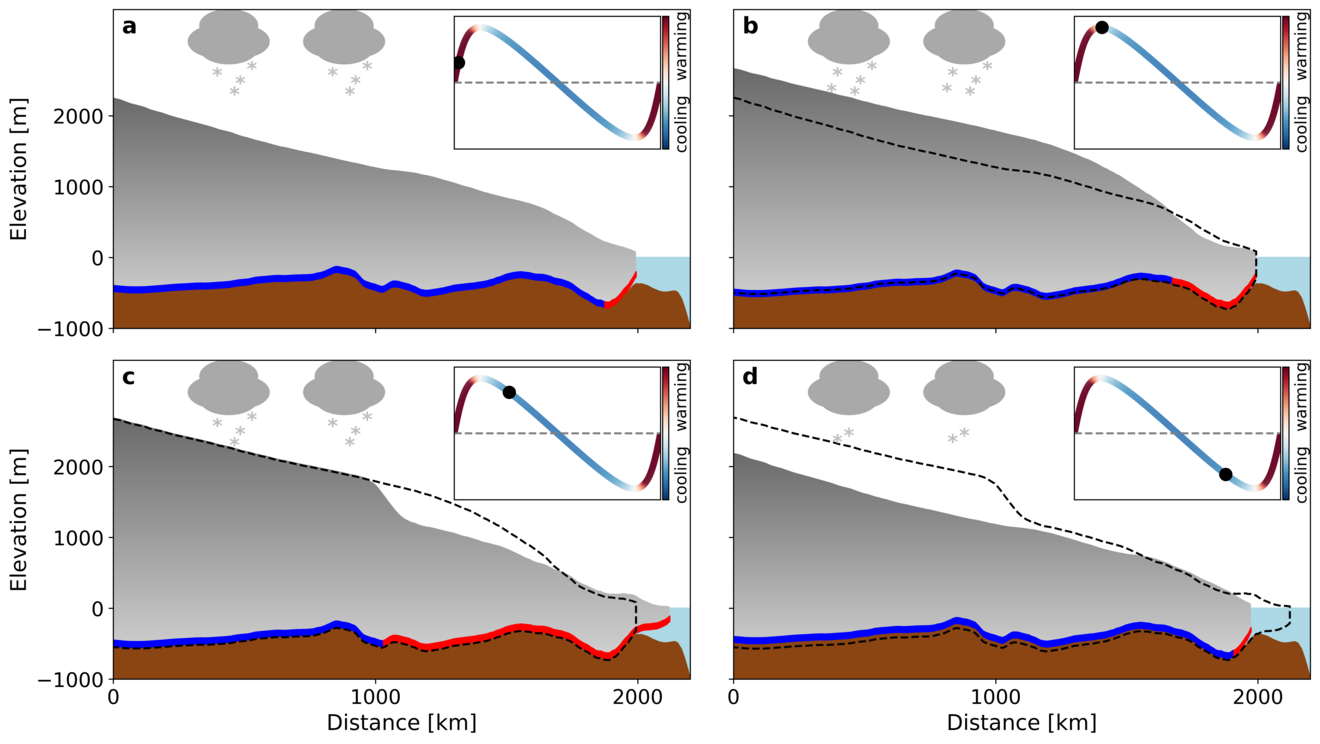A new mechanism for synchronising Heinrich events with Dansgaard-Oeschger cycles
Using simulations with a coupled ice sheet-solid earth model that are forced with a synthetic Dansgaard-Oescher cycle, Schannwell et al. present a Heinrich event mechanism that overcomes previous shortcomings and reproduces all main characteristics of Heinrich events from the paleo record under a wide range of forcing scenarios. In their mechanism, internal ice-sheet instabilities are the underlying cause for triggering Heinrich events. The timing of these events, however, can be locked into the cooling phase of the Dansgaard-Oeschger cycle through an atmospheric perturbation (e.g., snowfall and surface temperature) that is induced by the Dansgaard-Oeschger cycle itself. The atmospheric mechanism permits a pan-ice sheet response and allows for the occurrence of synchronous Heinrich events from two ice streams of the Laurentide Ice Sheet – a characteristic from the paleo-record that previous theories revolving around the ocean as the key driver have so far failed to explain.
A distinct advantage of the atmosphere-driven mechanism is that it is applicable to both ice streams terminating in the ocean as well as ice streams terminating on land. Therefore, the mechanism could provide insights not only on episodic glacier accelerations in the past, such as Heinrich events, but also on modern-day episodic accelerations observed from mountain glaciers and ice streams draining the Greenland and Antarctic ice sheets.

Original publication
Schannwell, C., Mikolajewicz, U., Kapsch, M.-L., Ziemen, F. (2024). A mechanism for reconciling the synchronisation of Heinrich events and Dansgaard-Oeschger cycles. Nature Communications 15, 2961, https://doi.org/10.1038/s41467-024-47141-7
Contact
Dr. Clemens Schannwell
Max Planck Institute for Meteorology
Email: clemens.schannwell@mpimet.mpg.de
Uwe Mikolajewicz
Max Planck Institute for Meteorology
Email: uwe.mikolajewicz@mpimet.mpg.de
Dr. Marie-Luise Kapsch
Max Planck Institute for Meteorology
Email: marie-luise.kapsch@mpimet.mpg.de
Dr. Florian Ziemen
German Climate Computing Center
Email: ziemen@dkrz.de
